Shujaat Khan
Phase Aberration Robust Beamformer for Planewave US Using Self-Supervised Learning
Feb 16, 2022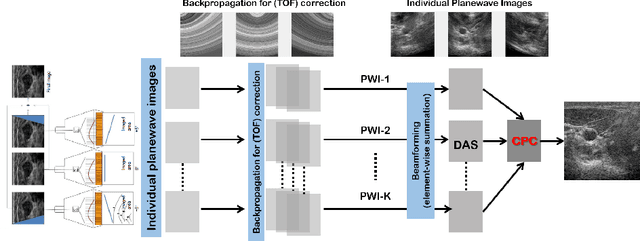

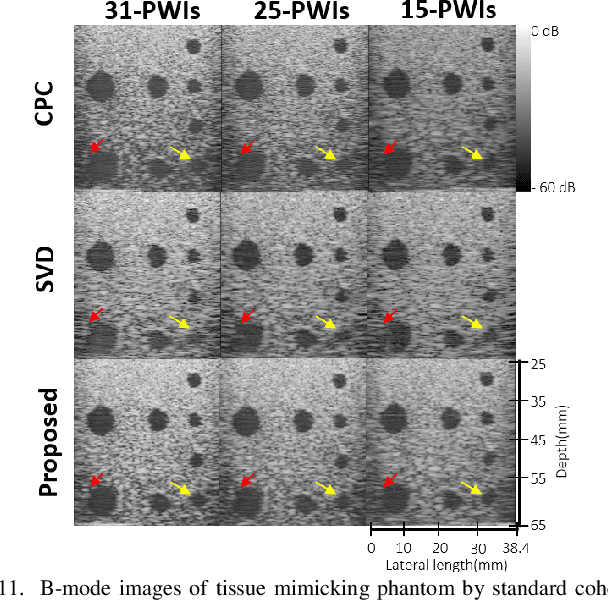
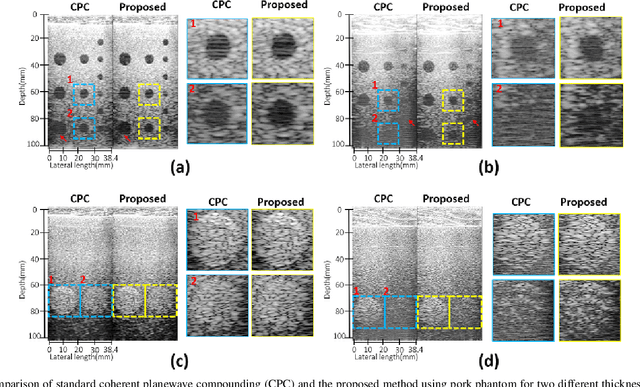
Abstract:Ultrasound (US) is widely used for clinical imaging applications thanks to its real-time and non-invasive nature. However, its lesion detectability is often limited in many applications due to the phase aberration artefact caused by variations in the speed of sound (SoS) within body parts. To address this, here we propose a novel self-supervised 3D CNN that enables phase aberration robust plane-wave imaging. Instead of aiming at estimating the SoS distribution as in conventional methods, our approach is unique in that the network is trained in a self-supervised manner to robustly generate a high-quality image from various phase aberrated images by modeling the variation in the speed of sound as stochastic. Experimental results using real measurements from tissue-mimicking phantom and \textit{in vivo} scans confirmed that the proposed method can significantly reduce the phase aberration artifacts and improve the visual quality of deep scans.
Tunable Image Quality Control of 3-D Ultrasound using Switchable CycleGAN
Dec 06, 2021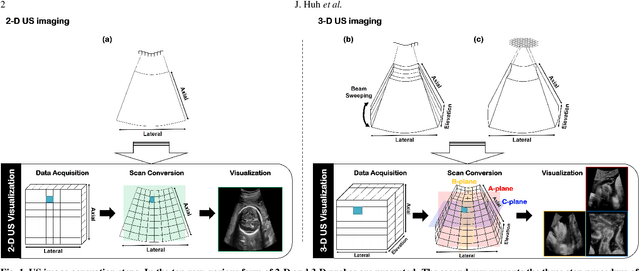

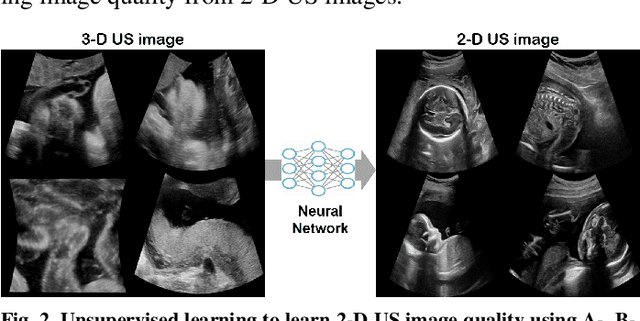
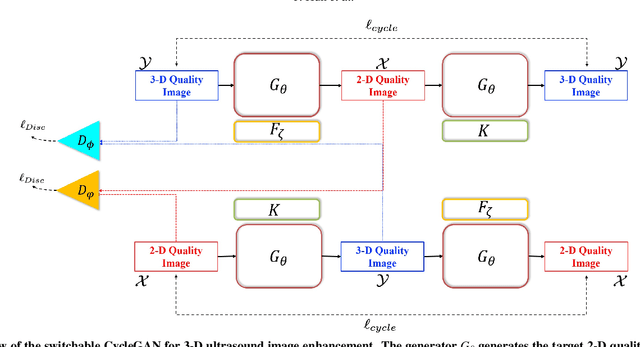
Abstract:In contrast to 2-D ultrasound (US) for uniaxial plane imaging, a 3-D US imaging system can visualize a volume along three axial planes. This allows for a full view of the anatomy, which is useful for gynecological (GYN) and obstetrical (OB) applications. Unfortunately, the 3-D US has an inherent limitation in resolution compared to the 2-D US. In the case of 3-D US with a 3-D mechanical probe, for example, the image quality is comparable along the beam direction, but significant deterioration in image quality is often observed in the other two axial image planes. To address this, here we propose a novel unsupervised deep learning approach to improve 3-D US image quality. In particular, using {\em unmatched} high-quality 2-D US images as a reference, we trained a recently proposed switchable CycleGAN architecture so that every mapping plane in 3-D US can learn the image quality of 2-D US images. Thanks to the switchable architecture, our network can also provide real-time control of image enhancement level based on user preference, which is ideal for a user-centric scanner setup. Extensive experiments with clinical evaluation confirm that our method offers significantly improved image quality as well user-friendly flexibility.
Performance Analysis of Fractional Learning Algorithms
Oct 11, 2021



Abstract:Fractional learning algorithms are trending in signal processing and adaptive filtering recently. However, it is unclear whether the proclaimed superiority over conventional algorithms is well-grounded or is a myth as their performance has never been extensively analyzed. In this article, a rigorous analysis of fractional variants of the least mean squares and steepest descent algorithms is performed. Some critical schematic kinks in fractional learning algorithms are identified. Their origins and consequences on the performance of the learning algorithms are discussed and swift ready-witted remedies are proposed. Apposite numerical experiments are conducted to discuss the convergence and efficiency of the fractional learning algorithms in stochastic environments.
AFP-SRC: Identification of Antifreeze Proteins Using Sparse Representation Classifier
Oct 02, 2020



Abstract:Species living in the extreme cold environment fight against the harsh conditions using antifreeze proteins (AFPs), that manipulates the freezing mechanism of water in more than one way. This amazing nature of AFP turns out to be extremely useful in several industrial and medical applications. The lack of similarity in their structure and sequence makes their prediction an arduous task and identifying them experimentally in the wet-lab is time-consuming and expensive. In this research, we propose a computational framework for the prediction of AFPs which is essentially based on a sample-specific classification method using the sparse reconstruction. A linear model and an over-complete dictionary matrix of known AFPs are used to predict a sparse class-label vector that provides a sample-association score. Delta-rule is applied for the reconstruction of two pseudo-samples using lower and upper parts of the sample-association vector and based on the minimum recovery score, class labels are assigned. We compare our approach with contemporary methods on a standard dataset and the proposed method is found to outperform in terms of Balanced accuracy and Youden's index. The MATLAB implementation of the proposed method is available at the author's GitHub page (\{https://github.com/Shujaat123/AFP-SRC}{https://github.com/Shujaat123/AFP-SRC}).
Switchable Deep Beamformer
Sep 04, 2020
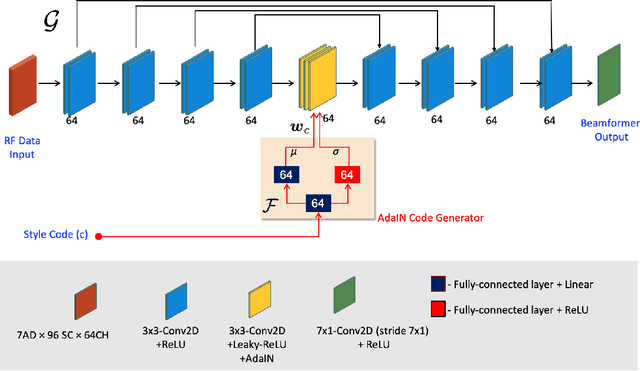
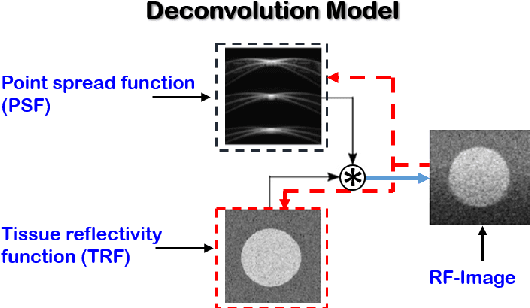

Abstract:Recent proposals of deep beamformers using deep neural networks have attracted significant attention as computational efficient alternatives to adaptive and compressive beamformers. Moreover, deep beamformers are versatile in that image post-processing algorithms can be combined with the beamforming. Unfortunately, in the current technology, a separate beamformer should be trained and stored for each application, demanding significant scanner resources. To address this problem, here we propose a {\em switchable} deep beamformer that can produce various types of output such as DAS, speckle removal, deconvolution, etc., using a single network with a simple switch. In particular, the switch is implemented through Adaptive Instance Normalization (AdaIN) layers, so that various output can be generated by merely changing the AdaIN code. Experimental results using B-mode focused ultrasound confirm the flexibility and efficacy of the proposed methods for various applications.
OT-driven Multi-Domain Unsupervised Ultrasound Image Artifact Removal using a Single CNN
Jul 10, 2020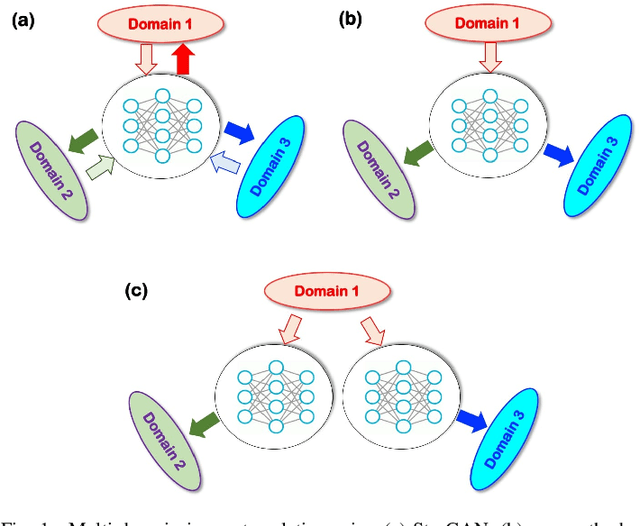
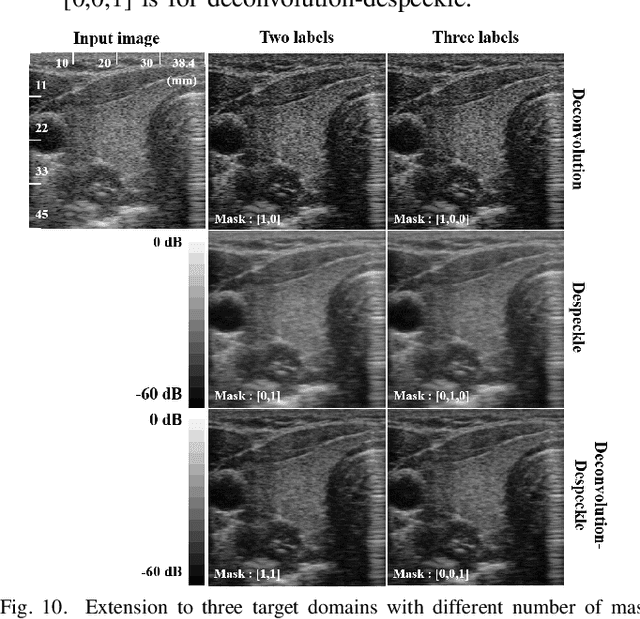
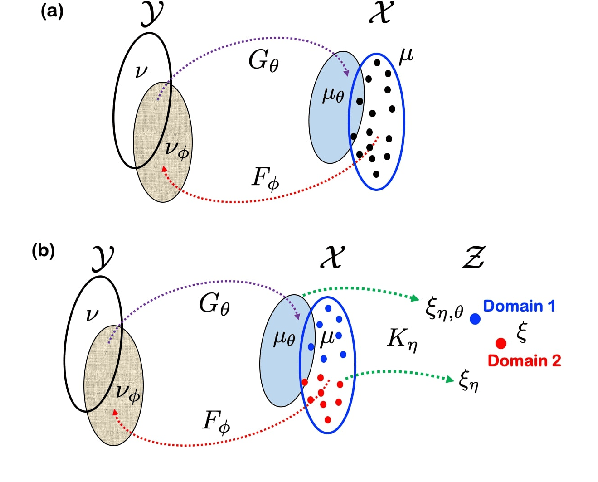
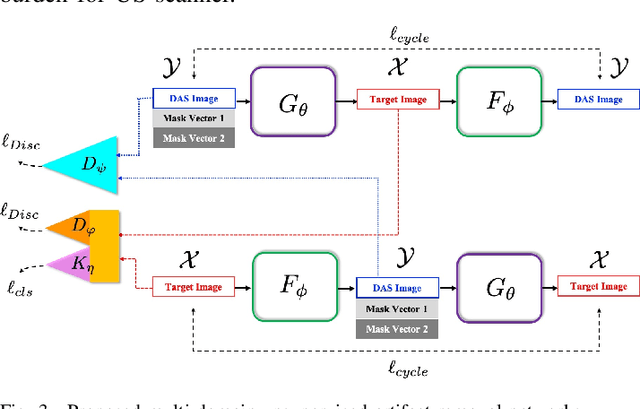
Abstract:Ultrasound imaging (US) often suffers from distinct image artifacts from various sources. Classic approaches for solving these problems are usually model-based iterative approaches that have been developed specifically for each type of artifact, which are often computationally intensive. Recently, deep learning approaches have been proposed as computationally efficient and high performance alternatives. Unfortunately, in the current deep learning approaches, a dedicated neural network should be trained with matched training data for each specific artifact type. This poses a fundamental limitation in the practical use of deep learning for US, since large number of models should be stored to deal with various US image artifacts. Inspired by the recent success of multi-domain image transfer, here we propose a novel, unsupervised, deep learning approach in which a single neural network can be used to deal with different types of US artifacts simply by changing a mask vector that switches between different target domains. Our algorithm is rigorously derived using an optimal transport (OT) theory for cascaded probability measures. Experimental results using phantom and in vivo data demonstrate that the proposed method can generate high quality image by removing distinct artifacts, which are comparable to those obtained by separately trained multiple neural networks.
Multi-Kernel Fusion for RBF Neural Networks
Jul 06, 2020



Abstract:A simple yet effective architectural design of radial basis function neural networks (RBFNN) makes them amongst the most popular conventional neural networks. The current generation of radial basis function neural network is equipped with multiple kernels which provide significant performance benefits compared to the previous generation using only a single kernel. In existing multi-kernel RBF algorithms, multi-kernel is formed by the convex combination of the base/primary kernels. In this paper, we propose a novel multi-kernel RBFNN in which every base kernel has its own (local) weight. This novel flexibility in the network provides better performance such as faster convergence rate, better local minima and resilience against stucking in poor local minima. These performance gains are achieved at a competitive computational complexity compared to the contemporary multi-kernel RBF algorithms. The proposed algorithm is thoroughly analysed for performance gain using mathematical and graphical illustrations and also evaluated on three different types of problems namely: (i) pattern classification, (ii) system identification and (iii) function approximation. Empirical results clearly show the superiority of the proposed algorithm compared to the existing state-of-the-art multi-kernel approaches.
Pushing the Limit of Unsupervised Learning for Ultrasound Image Artifact Removal
Jun 26, 2020



Abstract:Ultrasound (US) imaging is a fast and non-invasive imaging modality which is widely used for real-time clinical imaging applications without concerning about radiation hazard. Unfortunately, it often suffers from poor visual quality from various origins, such as speckle noises, blurring, multi-line acquisition (MLA), limited RF channels, small number of view angles for the case of plane wave imaging, etc. Classical methods to deal with these problems include image-domain signal processing approaches using various adaptive filtering and model-based approaches. Recently, deep learning approaches have been successfully used for ultrasound imaging field. However, one of the limitations of these approaches is that paired high quality images for supervised training are difficult to obtain in many practical applications. In this paper, inspired by the recent theory of unsupervised learning using optimal transport driven cycleGAN (OT-cycleGAN), we investigate applicability of unsupervised deep learning for US artifact removal problems without matched reference data. Experimental results for various tasks such as deconvolution, speckle removal, limited data artifact removal, etc. confirmed that our unsupervised learning method provides comparable results to supervised learning for many practical applications.
Chaotic Time Series Prediction using Spatio-Temporal RBF Neural Networks
Aug 17, 2019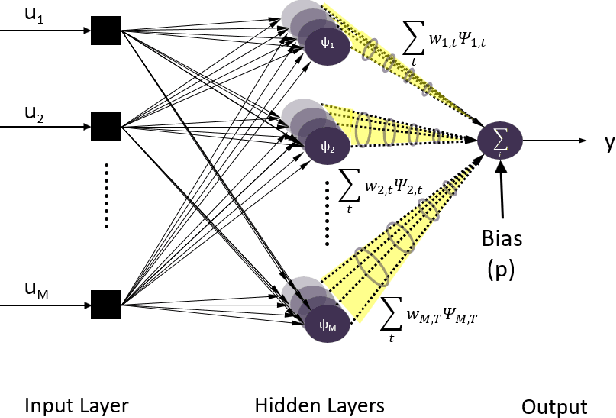
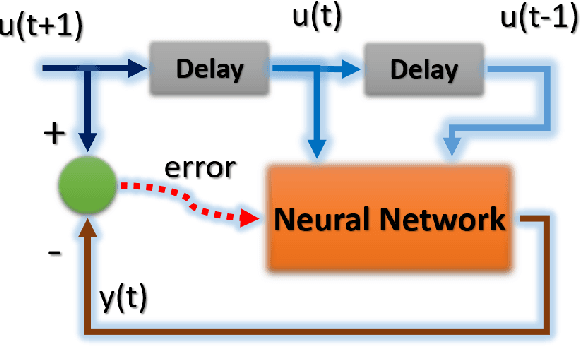
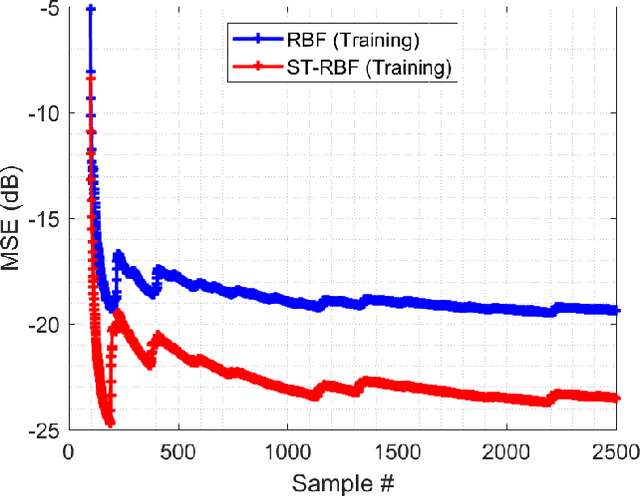
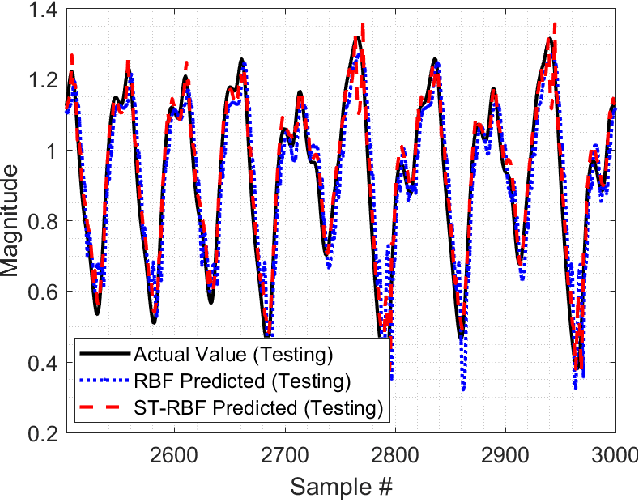
Abstract:Due to the dynamic nature, chaotic time series are difficult predict. In conventional signal processing approaches signals are treated either in time or in space domain only. Spatio-temporal analysis of signal provides more advantages over conventional uni-dimensional approaches by harnessing the information from both the temporal and spatial domains. Herein, we propose an spatio-temporal extension of RBF neural networks for the prediction of chaotic time series. The proposed algorithm utilizes the concept of time-space orthogonality and separately deals with the temporal dynamics and spatial non-linearity(complexity) of the chaotic series. The proposed RBF architecture is explored for the prediction of Mackey-Glass time series and results are compared with the standard RBF. The spatio-temporal RBF is shown to out perform the standard RBFNN by achieving significantly reduced estimation error.
Spatio-Temporal RBF Neural Networks
Aug 04, 2019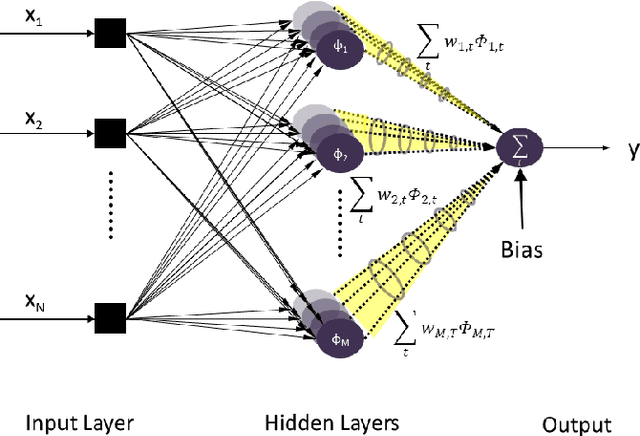
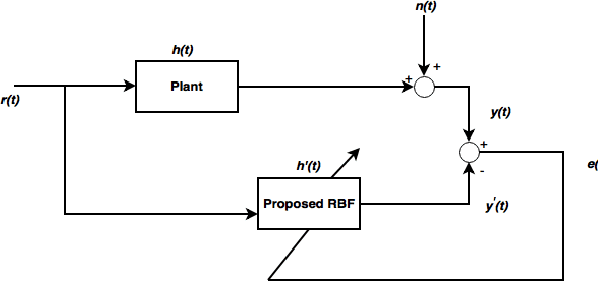

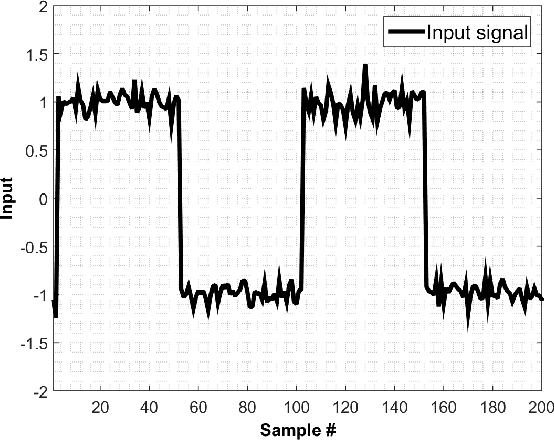
Abstract:Herein, we propose a spatio-temporal extension of RBFNN for nonlinear system identification problem. The proposed algorithm employs the concept of time-space orthogonality and separately models the dynamics and nonlinear complexities of the system. The proposed RBF architecture is explored for the estimation of a highly nonlinear system and results are compared with the standard architecture for both the conventional and fractional gradient decent-based learning rules. The spatio-temporal RBF is shown to perform better than the standard and fractional RBFNNs by achieving fast convergence and significantly reduced estimation error.
* Published in 2018 3rd International Conference on Emerging Trends in Engineering, Sciences and Technology (ICEEST)
 Add to Chrome
Add to Chrome Add to Firefox
Add to Firefox Add to Edge
Add to Edge